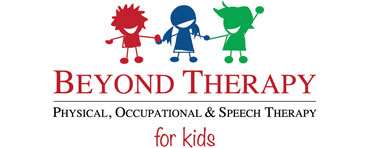Torticollis is when an infant keeps their head tilted to one side and rotated to the opposite side. The muscle on the side of the neck, the Sternocleidomastoid muscle or SCM, is shortened and tight causing limited mobility. This poor posture can happen either in utero due to their positioning in the womb, limited tolerance to tummy time, and/or prolonged positions in different equipment such as swings, bouncers, rockers, carriers, car seats, etc… There has been an increase in prevalence up to 16% over the past several years due infant sleeping on their backs, which is still the safest method for a child to sleep. However, it’s the limited time spent on their tummy when awake along with all the containers we are placing our children that is causing these movement restrictions. 1 in 60 children will have torticollis and it is easily corrected if recognized early.
Most people will look at a child and think it is cute how their baby is tilting their head or how they always lean into snuggle when you hold them but it can cause delays in motor skills, visual disturbances, and even feeding or oral motor problems. A child who keeps his head tilted to one side may also have other postural abnormalities including; elevated shoulder, arm turned in with hand fisted, trunk lean to one side (which could lead to scoliosis), and limited weight bearing on one side. They may also have facial asymmetry with one side of their face lower than the other including eye and ear set lower on affected side, flattened cheek, and forehead protrusion along with flattened head. With all of these postural abnormalities, the child will have asymmetrical movement patterns which could lead to further delays including; poor head control, limited visual tracking, decreased reaching on affected side, rolling to only one side, difficulty sitting, prefers to side sit to one side, inability to crawl or asymmetrical crawl, delayed walking and gait disturbances, poor balance, and decreased tolerance to movement in space such as swings and slides. Torticollis may seem like a small issue initially but if not treated by therapist or if caregivers are not educated in appropriate positioning and stretches, the child’s restricted movement can cause many delays in their milestones.
The number one thing any parent can do is to place your child in the floor and provide them with more space to be mobile, constantly varying their positions, and more active tummy time. All the seats, bouncers, swings, and exersaucers are just best if not used until your child is able to roll and sit up Independently which typically occurs around 6-9 mos. of age. If the child already has diagnosis of Torticollis and you are playing them upright and they do not have head control, gravity will simply push them further and further into an incorrect position causing further motion restrictions. All theses containers should also only be used for a limited amount of time, no longer than 15-20 minutes at a time. If you notice that your child is only sleeping with their head turned to one side, if they are having difficulty nursing on one side, or if they have any facial asymmetry with flat spot on the back of their head contact your pediatrician to get in with a physical therapist. We can provide skilled therapy to improve child’s posture, educate family on stretching and positioning, and prevent the child from having and further complications. Most moms are having to return to work earlier, so make sure to educate all caregivers if your child has been diagnosed with Torticollis. Carryover with home exercises program and compliance amongst mother and daycare workers is very important. Remember the earlier the problem is addressed the better because as soon as a child begins to crawl or move it may be too late to alter their movement patterns. Torticollis may seem like a simple problem to fix but it can cause long term problems if ignored.
References:
Children with Torticollis: Diagnosis & It’s Associated Problems (day2dayparenting.com)
Jessica Rhaly, DPT graduated from University of Mississippi in Oxford, MS in 2005 with her bachelor’s degree in Biology and went on to get her Doctorate in Physical Therapy at the University of Mississippi Medical Center in Jackson, MS. She is originally from Carrollton in North Mississippi; however, after graduation in 2009 she moved to Brandon, MS. She has always loved to be around kids which drove her to search for a career in helping children with special needs. Jessica truly feels at the end of the day that the best reward for her is helping children live more functional and fulfilling lives. One of her main goals here at Beyond Therapy is to teach children about physical fitness and educate parents on how to promote healthy lifestyles at home. Jessica currently lives in Madison, MS with her husband and 2 children.
